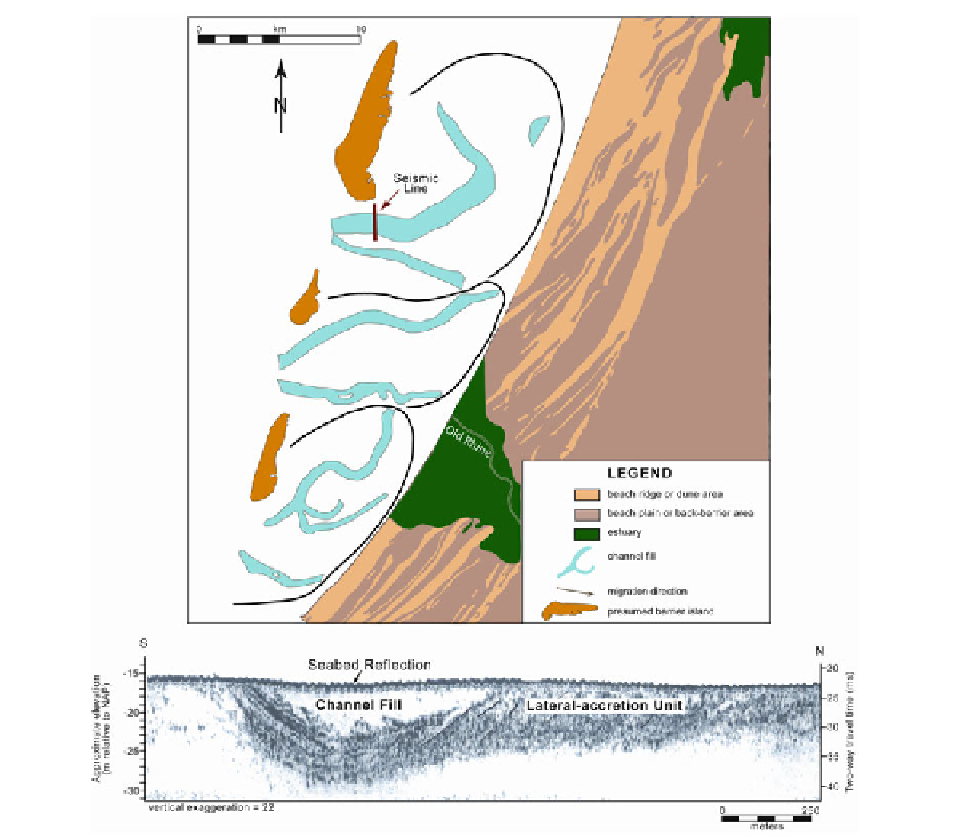Geology Reference
In-Depth Information
Fig. 12.20
Drainage system inferred from geophysical and sedimentological data collected offshore of the western Netherlands
(From Rieu et al.
2005
). Note the southerly migration of the tidal channel as seen in the seismic section
and recognition and mapping of tidal inlet complexes
will remain an important part of future exploration
efforts.
channel migration, and (2) sand delivery to the inlet,
which leads to the construction of mobile sedimen-
tary forms including a variety of small bedforms,
large swash bars and bar complexes, and tidal deltas.
At some inlets, framework geology has stabilized the
inlet channel. Distortions of the tidal wave in response
to inlet and bay hypsometry produce velocity asym-
metries that control the volumes and pathways of
sediment transport at the inlet and ultimately, the dis-
tribution of sediment to the various sand reservoirs.
Sand bypassing the inlet as well as circulated within
the inlet creates landward migrating bar complexes
on the swash platform that weld to the landward
shoreline. Sediment bypassing events and channel
12.9
Summary
Tidal inlets are one of nature's most dynamic coastal
systems due to their continuous response to highly
variable energy vectors. Their constantly changing
morphology refl ects short- and long-term adjustments
to storm and day-to-day processes. Their morpho-
logic development is facilitated by: (1) the unconsoli-
dated nature of their channel banks, which allows

